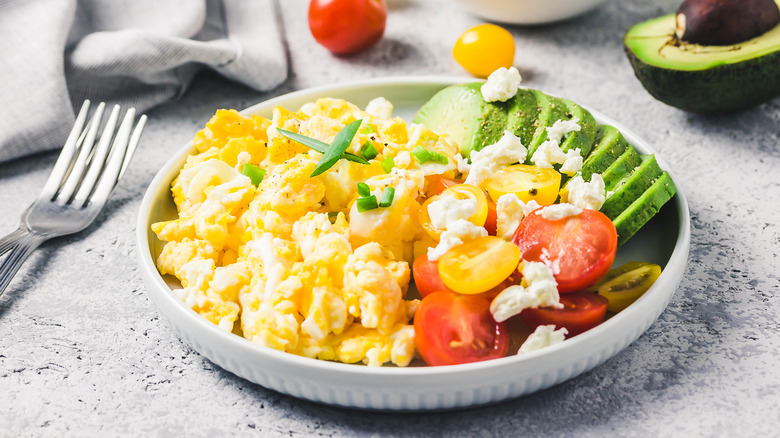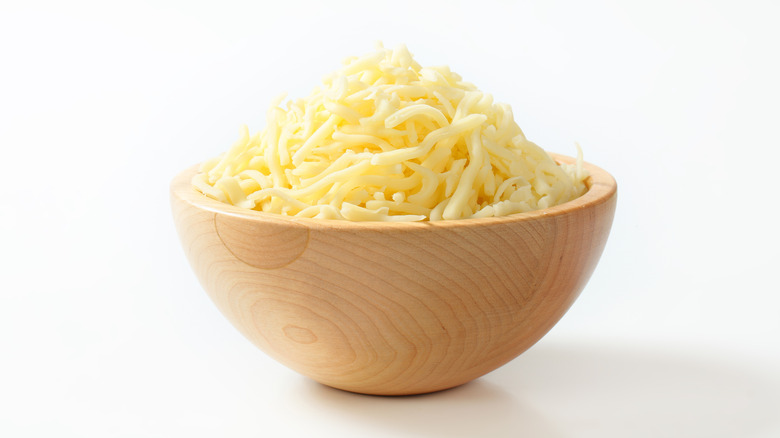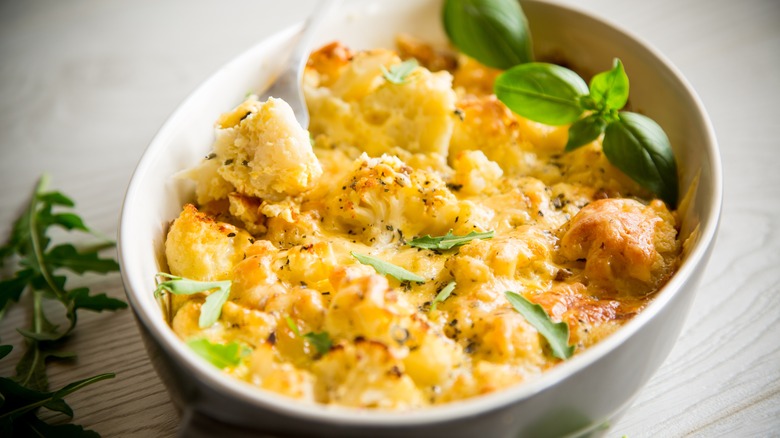When Do You Add Cheese To Scrambled Eggs?
Cheese makes just about everything taste better, including one of the most traditional breakfast staples, scrambled eggs. How much better? Well, that depends on what kind of cheese you're adding, but also, and perhaps just as importantly, when the cheese has been added. Cheese, for example, almost never should be introduced to the skillet until the eggs are already being cooked. In most cases, the eggs should be nearly done. This not only allows the cheese to achieve the perfect melt, but also helps highlight the cheese's flavor relative to the eggs and seasonings.
The way the cheese is prepared prior to cooking also matters, of course. Grating your own cheese is generally the best method, as it allows the cheese to melt quickly without upsetting the timing of the scrambled eggs. The key to making perfect scrambled eggs, after all, is taking them off the stove at precisely the right time. Basically, that's when the eggs are still a little runny, as they'll continue to cook even after being taken off the stove. What you don't want, then, is to leave the eggs on too long because you're waiting for your big chunks of cheese to melt properly.
Timing for various types of cheeses
Although you really can't go wrong with cheddar cheese, there are several other cheese options that also pair wonderfully with scrambled eggs. These include goat, feta, Edam, Gouda, Gruyère, Monterey Jack, and Swiss cheeses, among others. Each cheese brings a different flavor to the scrambled eggs and may need to be added at a slightly different point in the cooking process, which is important to consider.
The important thing to note, especially with grated or finely crumbled cheeses, is that they take very little time to melt. So with these varieties of cheese, you can actually wait until the scrambled eggs have already been removed from the stove before adding them to the mix. The heat of the eggs as they continue to cook in the skillet (or on the plate) will be enough to melt the cheese properly. This is true for finely crumbled feta and goat cheeses, and also for finely grated parmesan cheese.
A little more time is needed for other cheeses; meaning, you'll want to add the cheese while the scrambled eggs are still being cooked over heat, and are just beginning to form curds while they're being stirred. This is the perfect time, for example, to add Edam, Gouda, or Swiss cheeses. Cheddar and Monterey Jack, meanwhile, should be added slightly later, when the eggs are approximately 75% cooked.
Other tips and tricks for making the best cheesy scrambled eggs
Like barbecue, scrambled eggs are at their best when cooked low and slow. The good news, however, is that even at low or low-medium heat you'll only need 5 to 10 minutes tops to properly cook your eggs. Ideally, the scrambled eggs should be stirred in the skillet with a rubber spatula to avoid scratching the non-stick surface. Circular motions are the best, as they promote larger curds.
In addition to properly timing out the addition of cheese to your scrambled eggs, it's also important to add seasonings at the right time. Adding salt too soon is a no-no, for example, because it pulls moisture from the eggs, and thus makes it much more likely you'll end up with dry eggs on your plate. Add salt and pepper last, right before you begin to eat; and since cheese is naturally salty, go heavier on the pepper. Chives, another nice touch, should also be added at the end.



